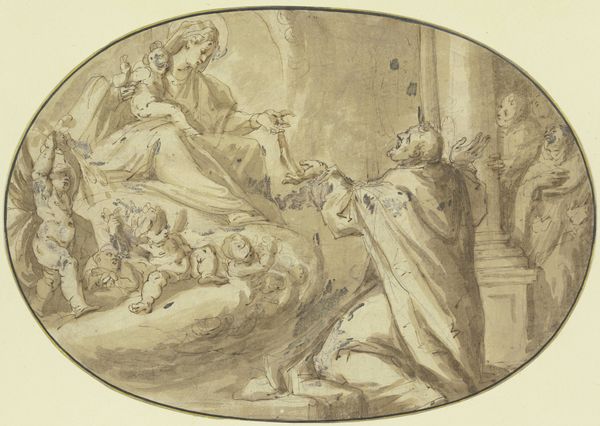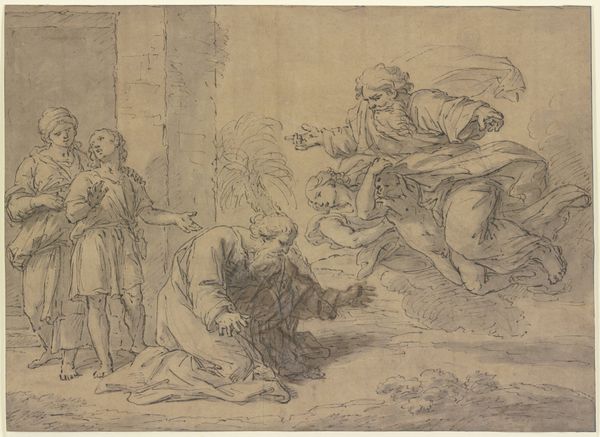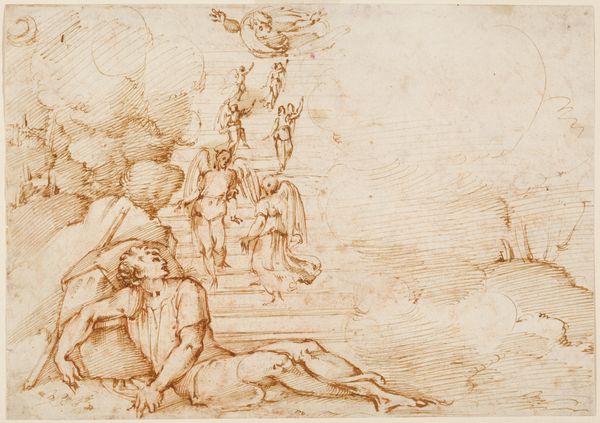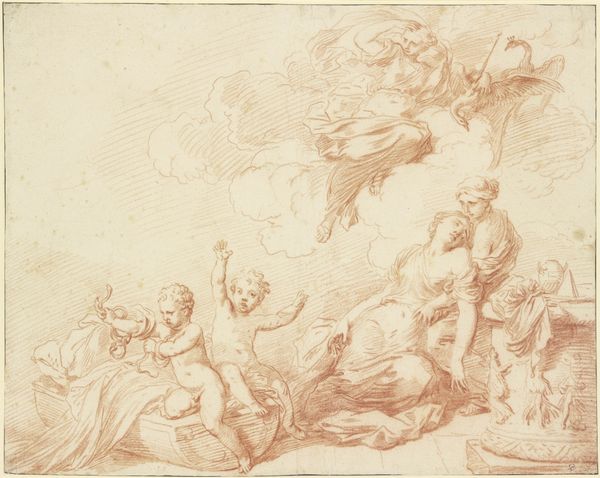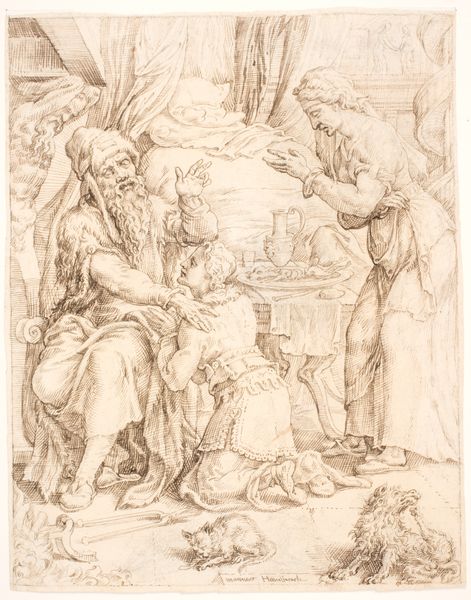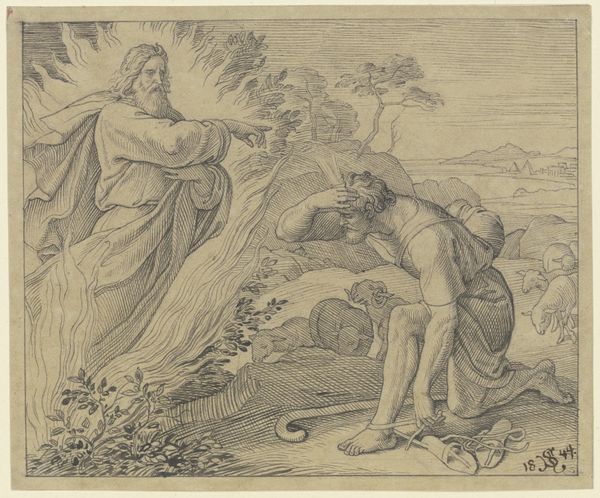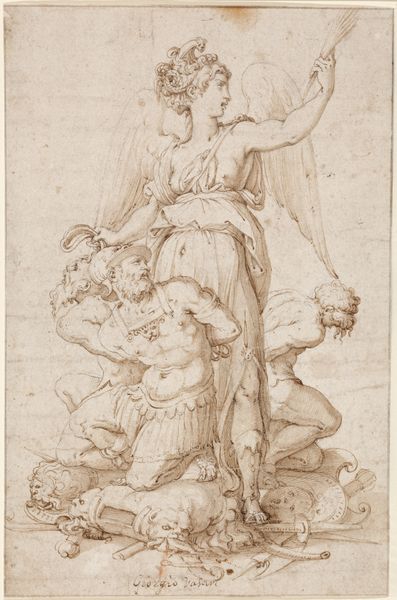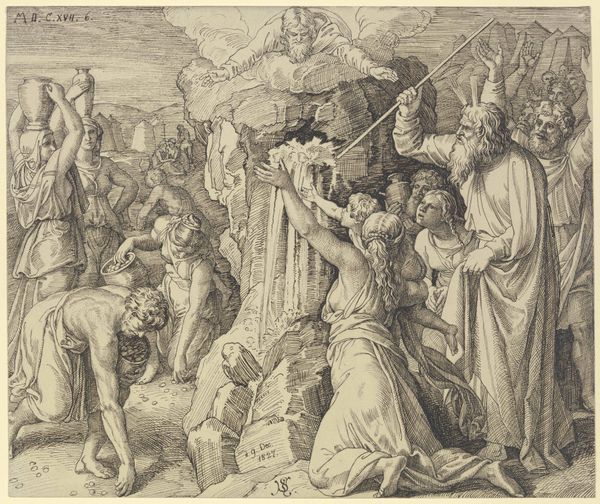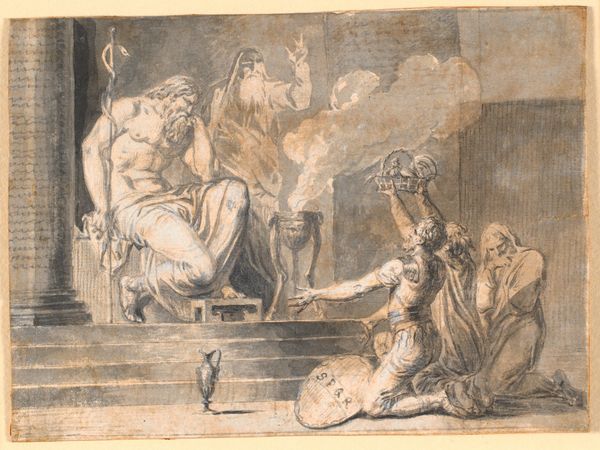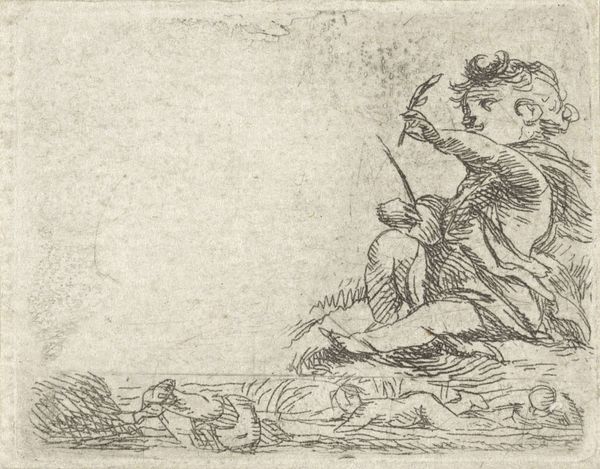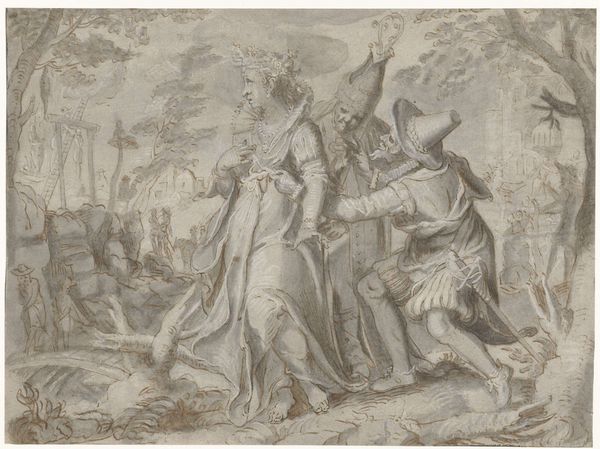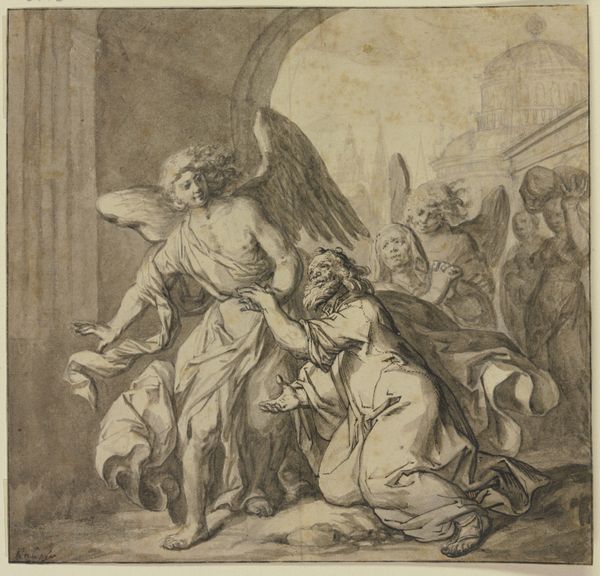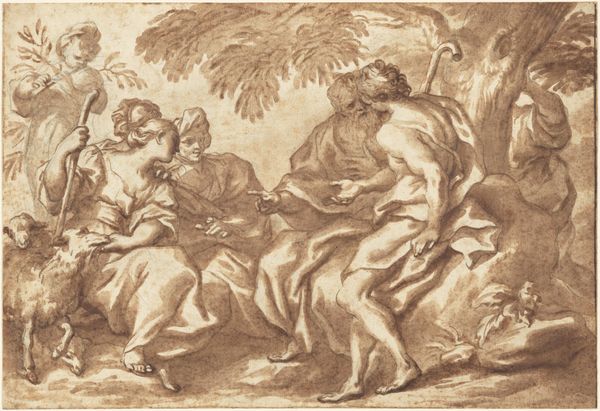
drawing, ink
#
portrait
#
drawing
#
allegory
#
charcoal drawing
#
ink
#
romanticism
#
history-painting
Copyright: Public domain
Curator: Look at this striking drawing attributed to Orest Kiprensky entitled, “Kutuzov, parading in the temple of Fame." It's a drawing in ink and charcoal, full of allegorical figures surrounding what appears to be a portrait of a general. Editor: The contrast created through the delicate ink strokes with stark areas of shadow and denser charcoal feels quite striking. It has the tonal intensity and moodiness of Romanticism for sure. The swirling cloud forms give an ethereal sense to the composition. Curator: Exactly! And the allegorical elements place the figure of Kutuzov within a larger narrative. Notice the figure being crowned with laurel, as Fame hovers above and victory accompanies him. There is even an enigmatic river god reclining in the lower corner. It clearly intends to portray Kutuzov's victorious achievements. Editor: The visual language used here is heavily reliant on Neoclassical tropes. We've got allusions to ancient deities and heroes which seem to equate Kutuzov's military success to the greatness of figures like Alexander the Great or Caesar. Note also the shield bearing Medusa’s head – warding off foes as it were. Curator: Indeed! The imagery connects his specific military victories, likely against Napoleon, to the enduring cultural memory of heroism. It speaks to the emotional and psychological investment in victory—a concept that resonates through history. What do you make of his gesture of striding forward? Editor: I read that stride as forward motion, perhaps a symbol of Russia's trajectory during that historical moment. But his face remains impassive, stoic, so there’s an element of classical reserve as well, quite different from the looser swirling effects behind him. Curator: Yes, that’s true, a beautiful counterpoint of action and control, which seems right in keeping with a leader who has triumphed. Kiprensky's skill with these archetypal forms shows how they continually can gain new, complex meanings when reinterpreted. Editor: Agreed. And seeing these classical forms rendered with such tonal variation—the chiaroscuro effects, for example— gives it a certain weight. It’s really a masterclass in formal rhetoric! I learned something about its texture through the blend of mediums as well.
Comments
No comments
Be the first to comment and join the conversation on the ultimate creative platform.
